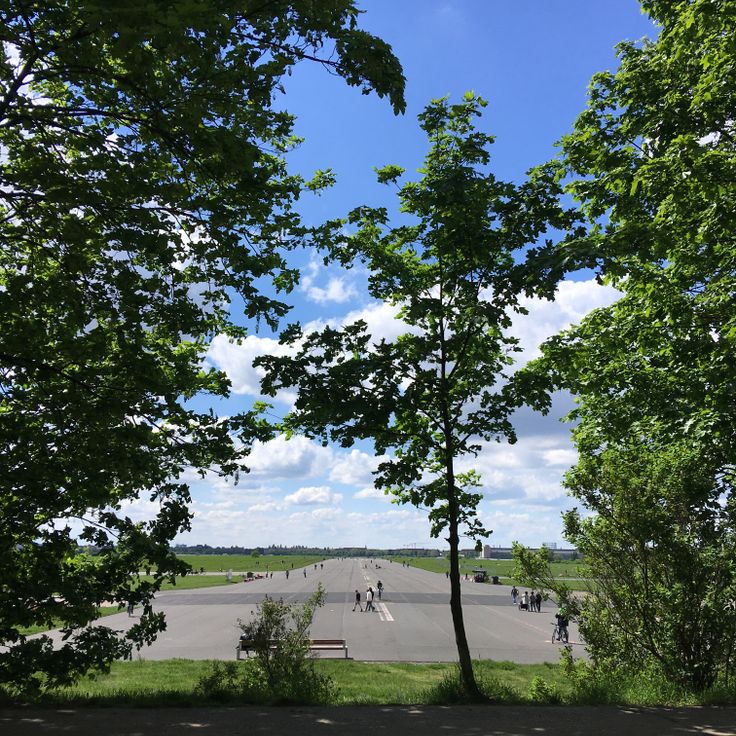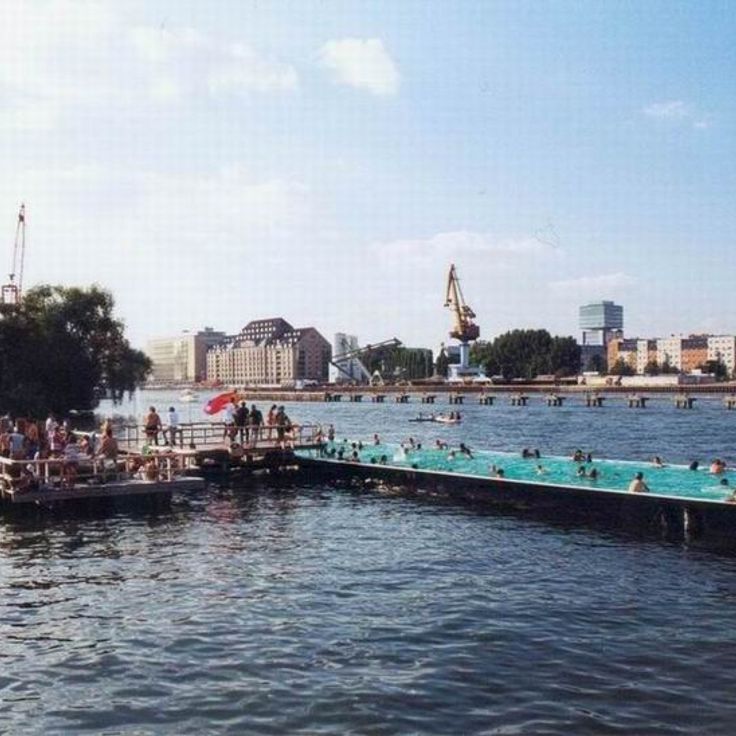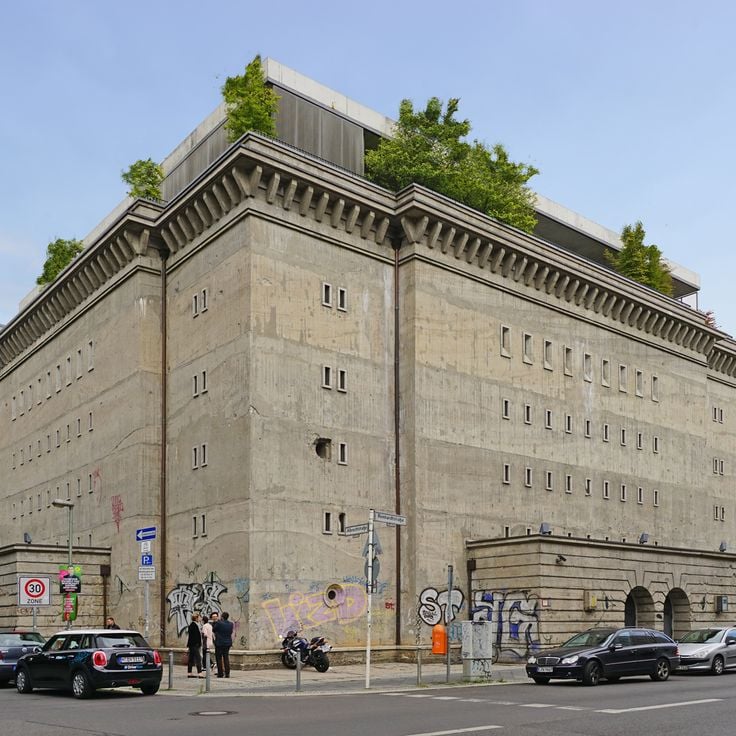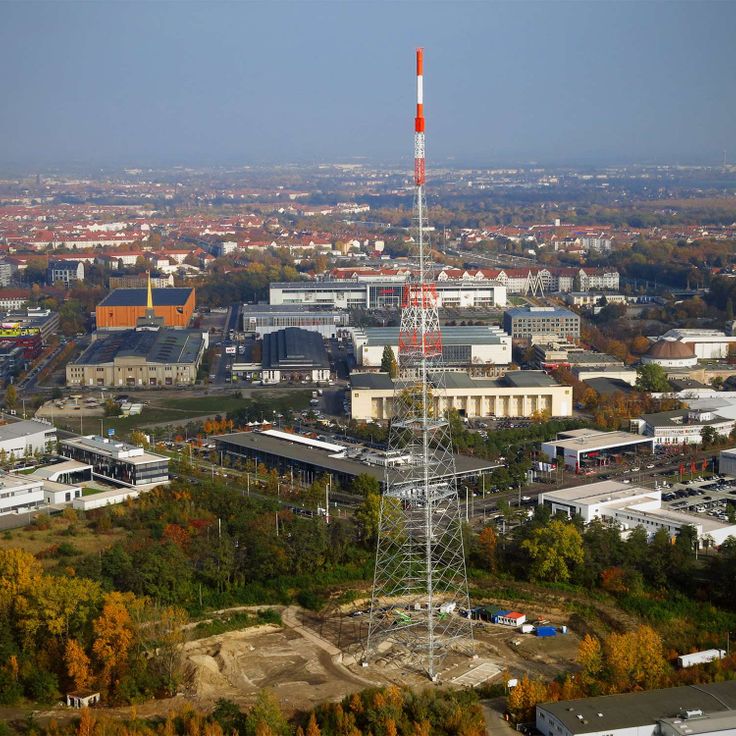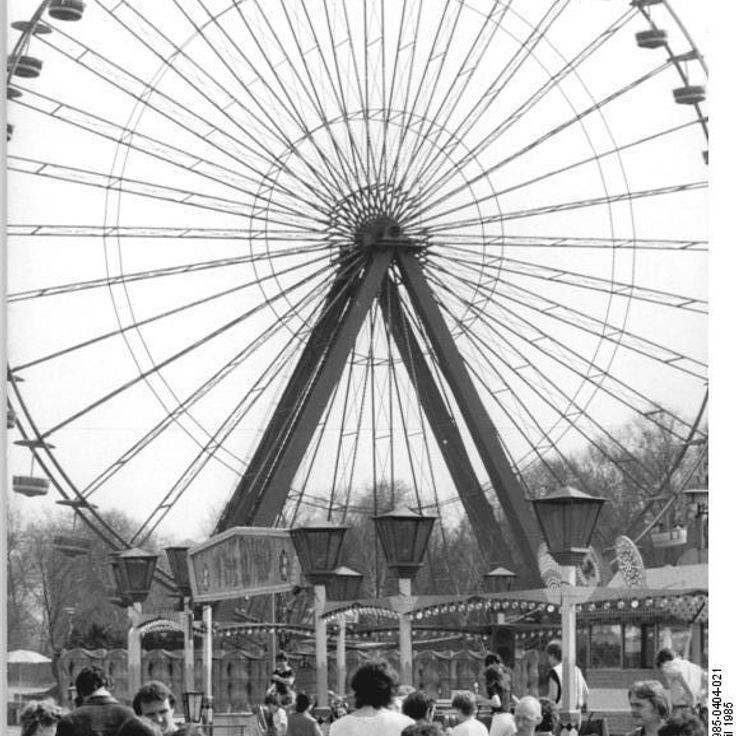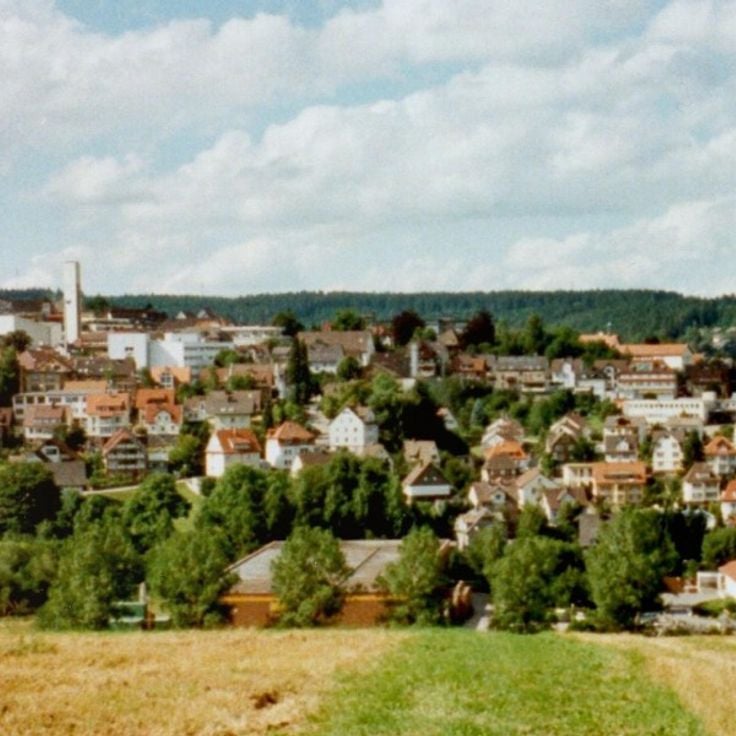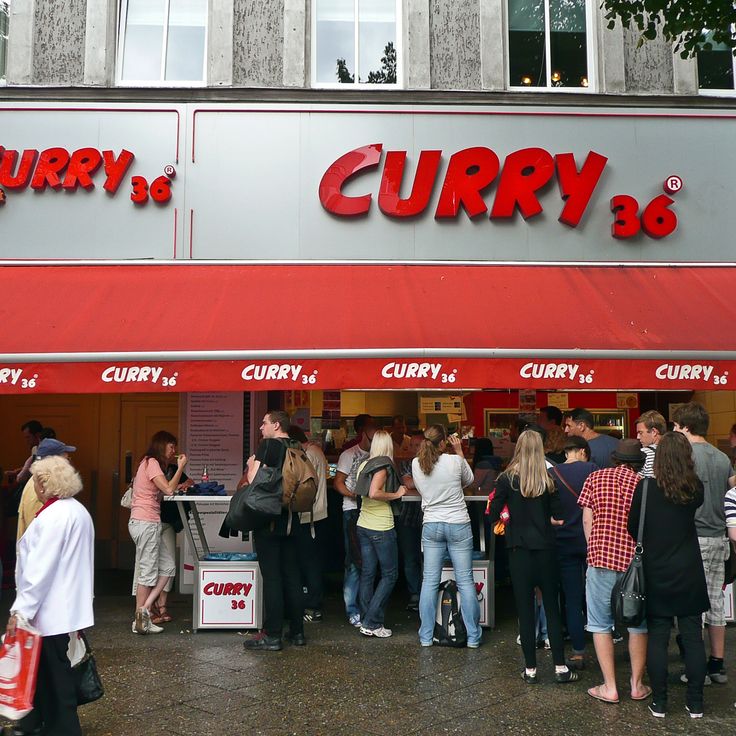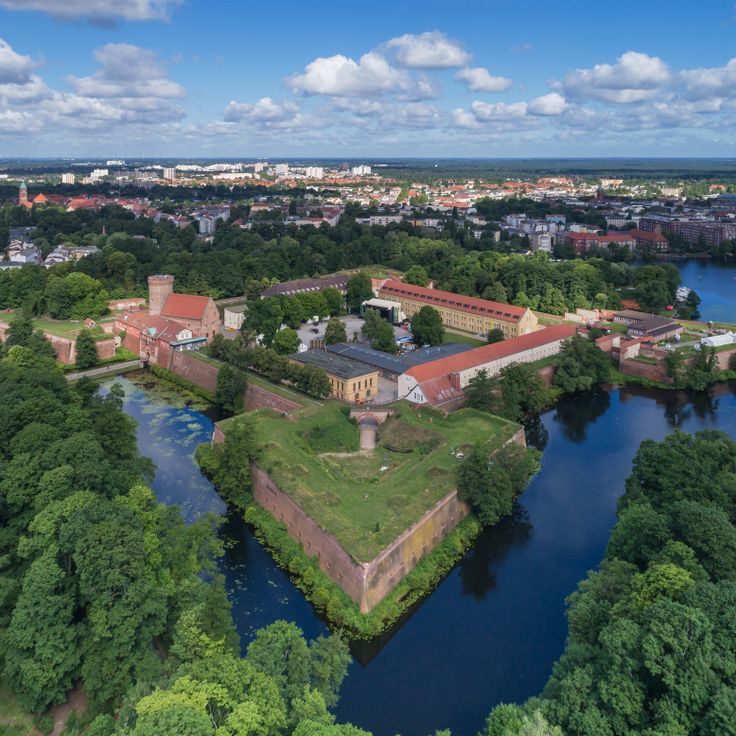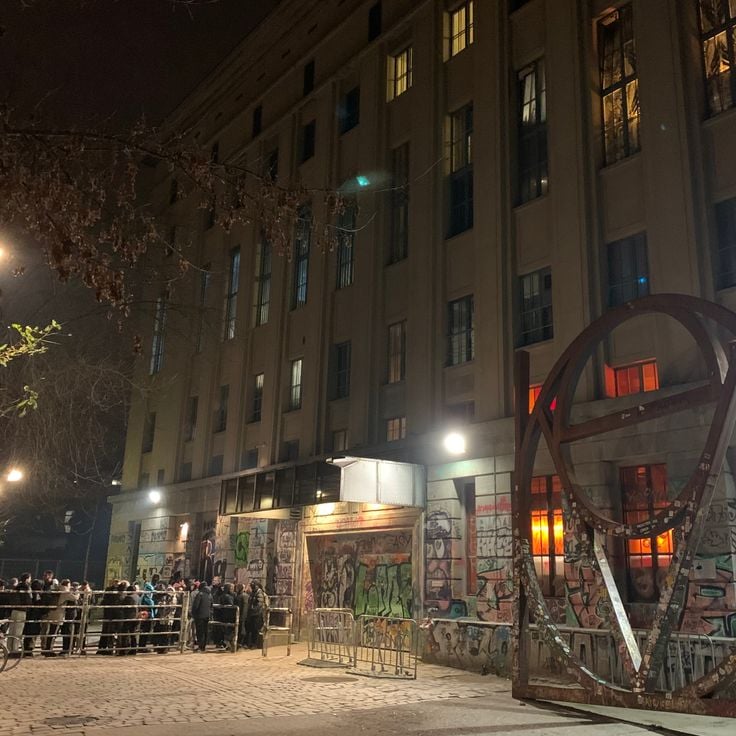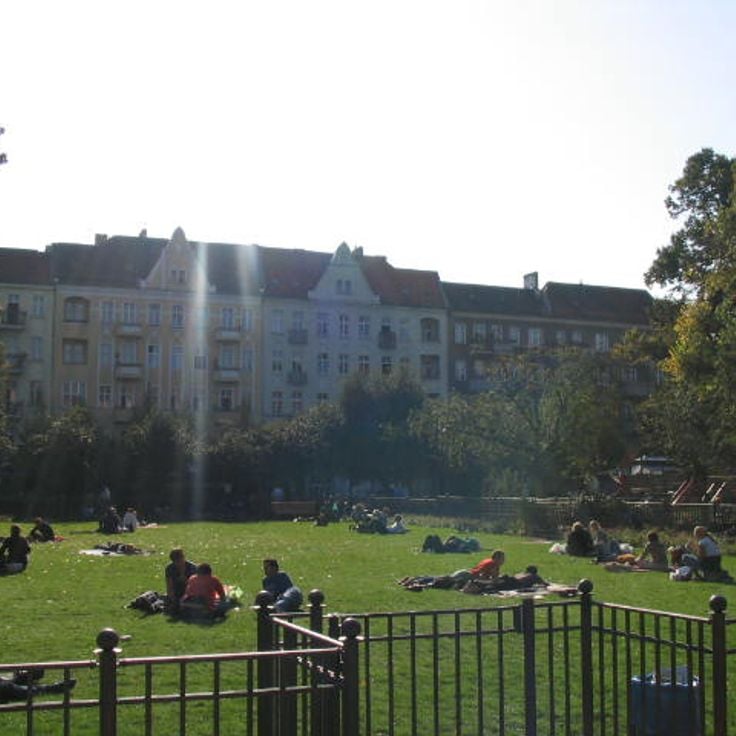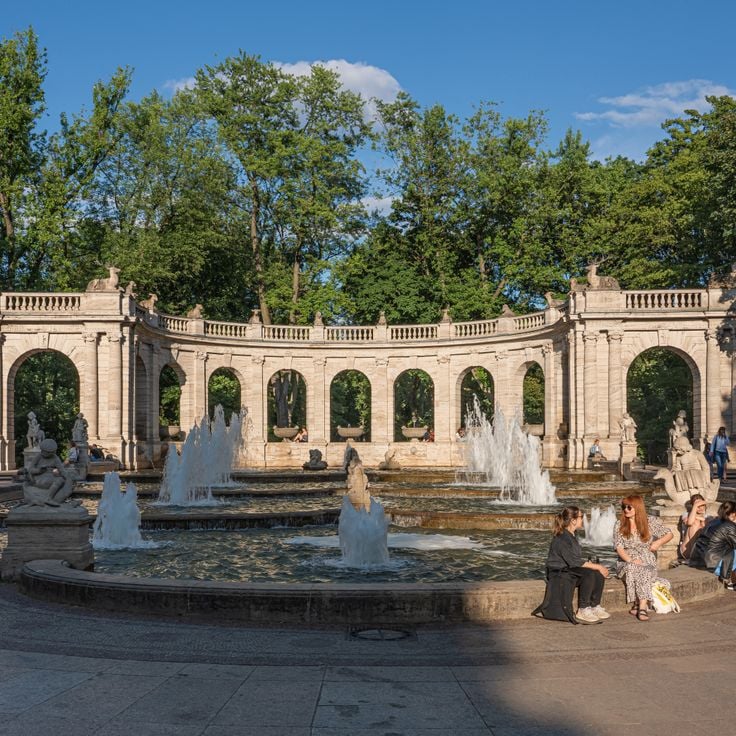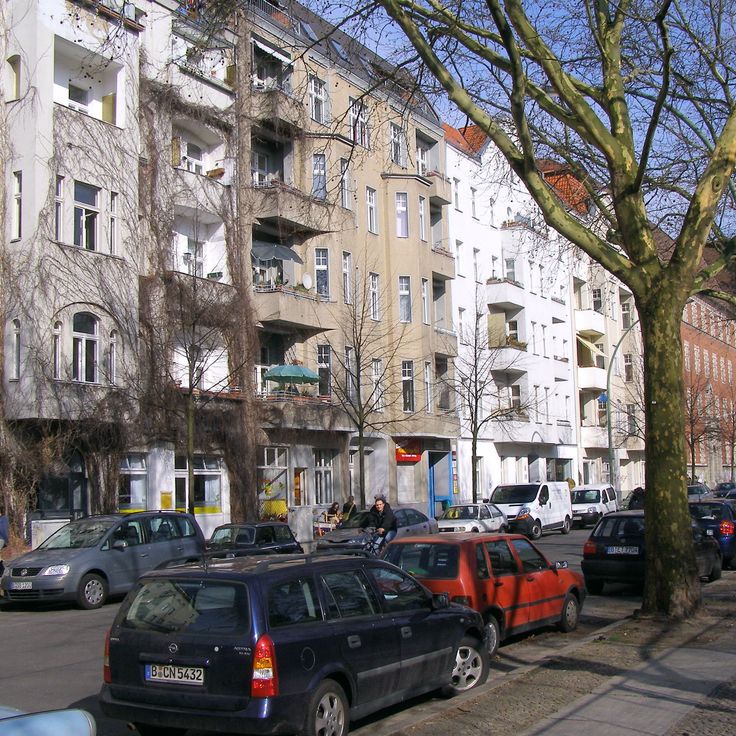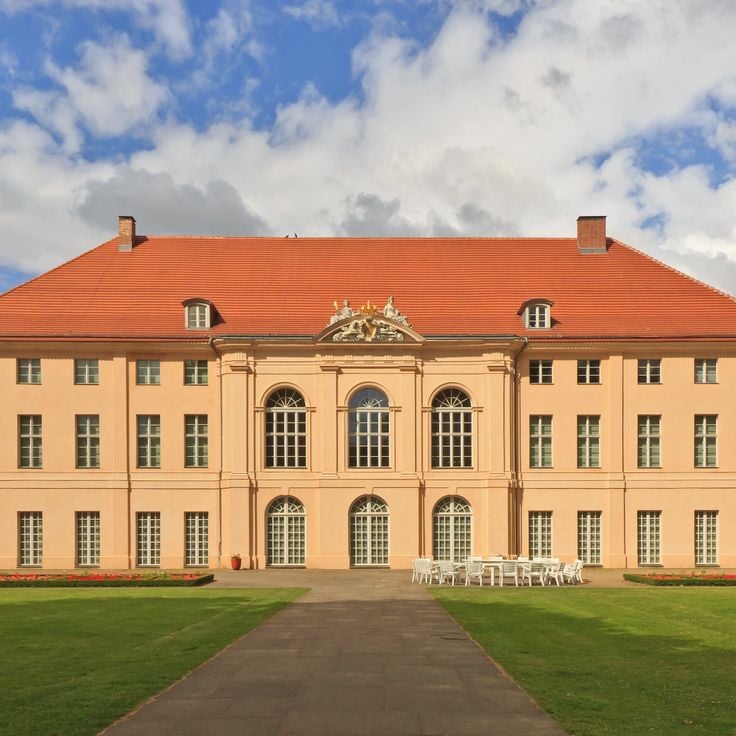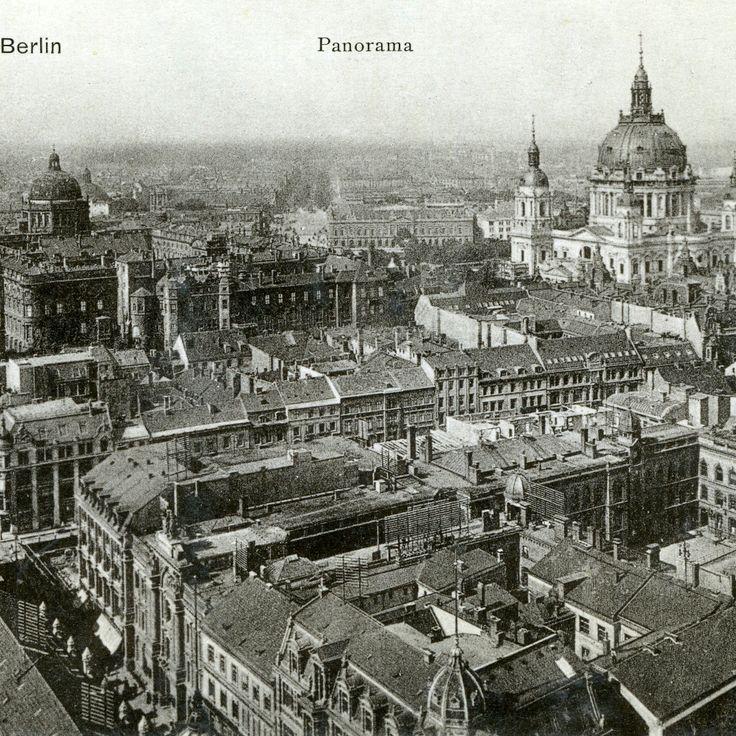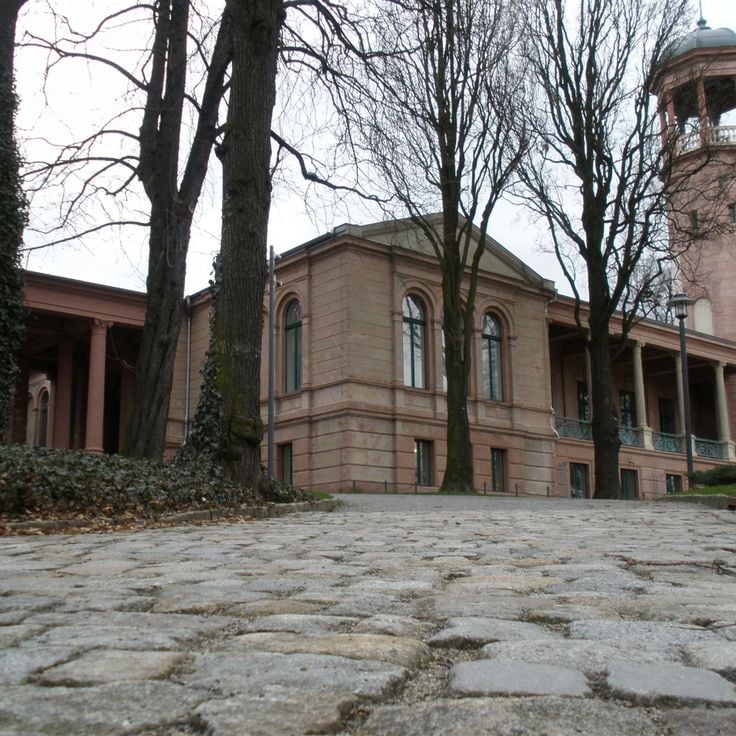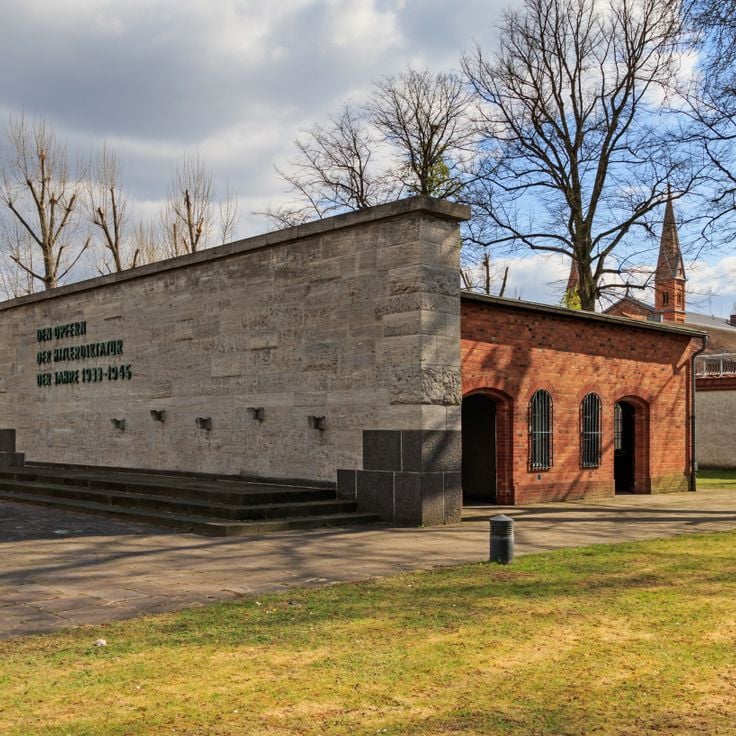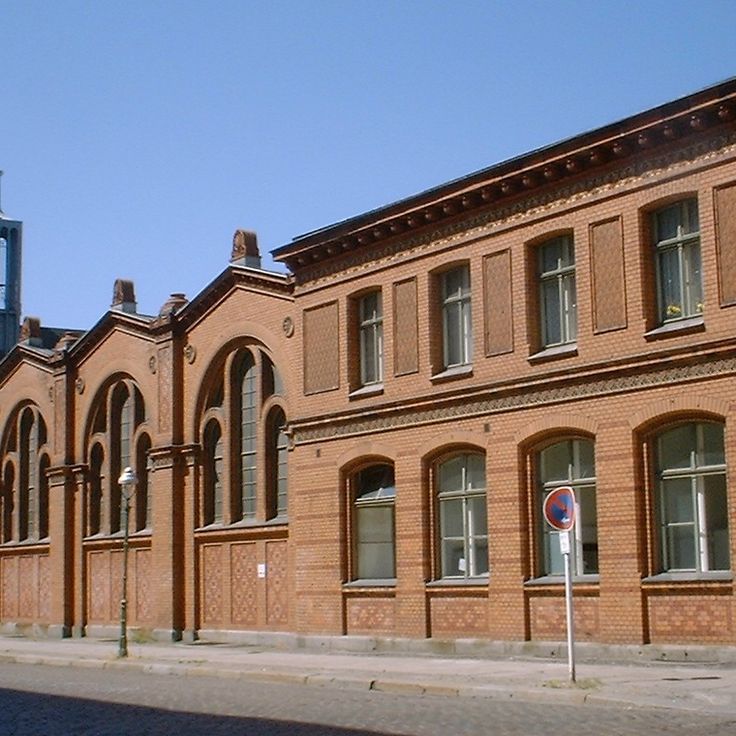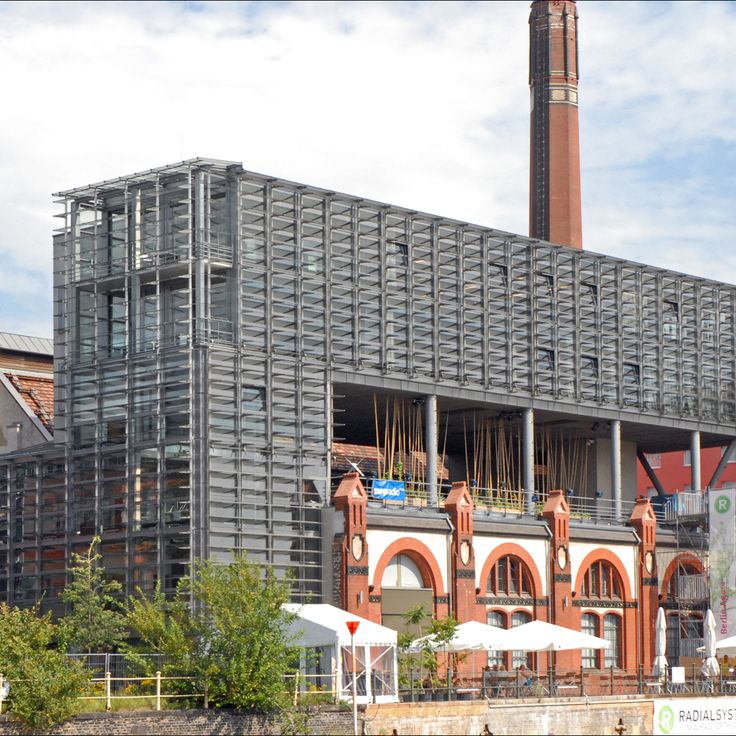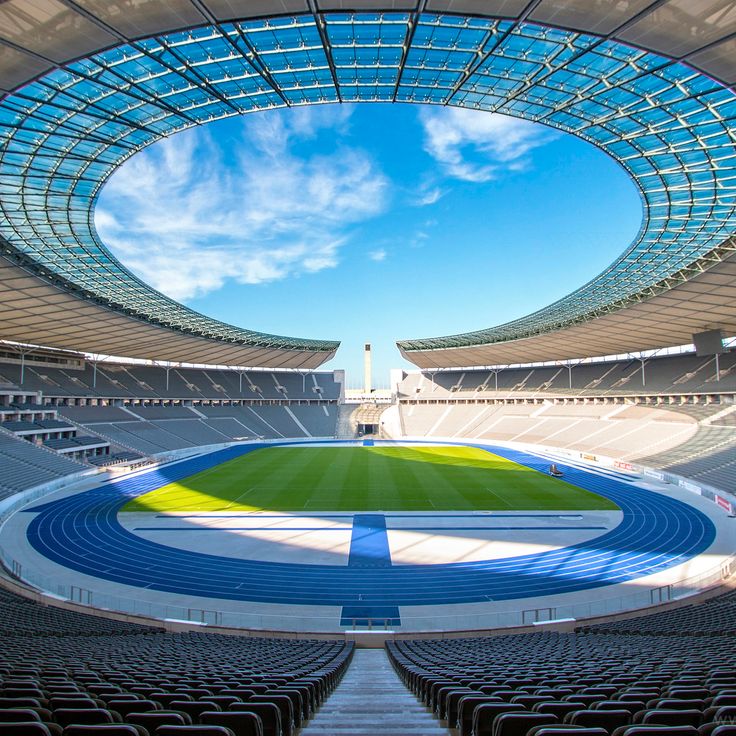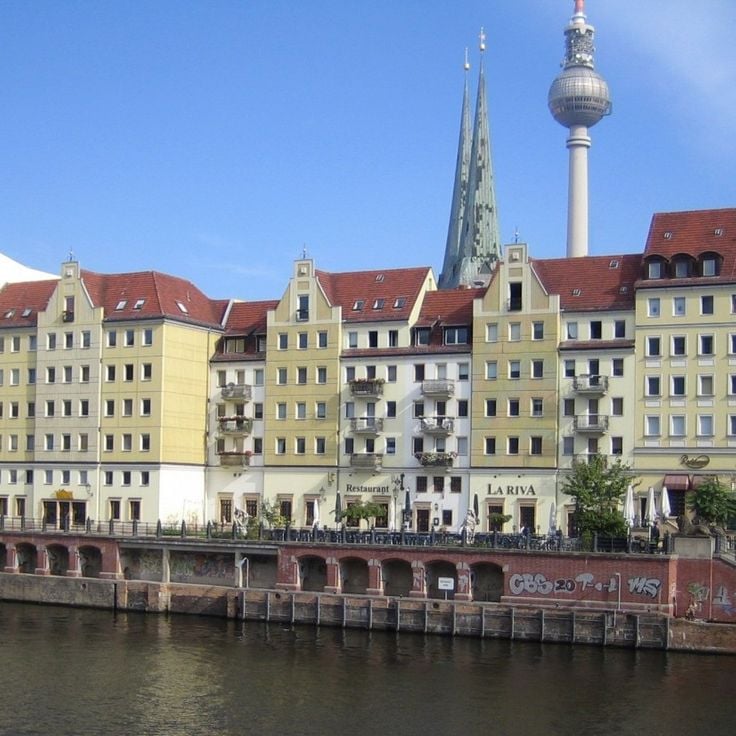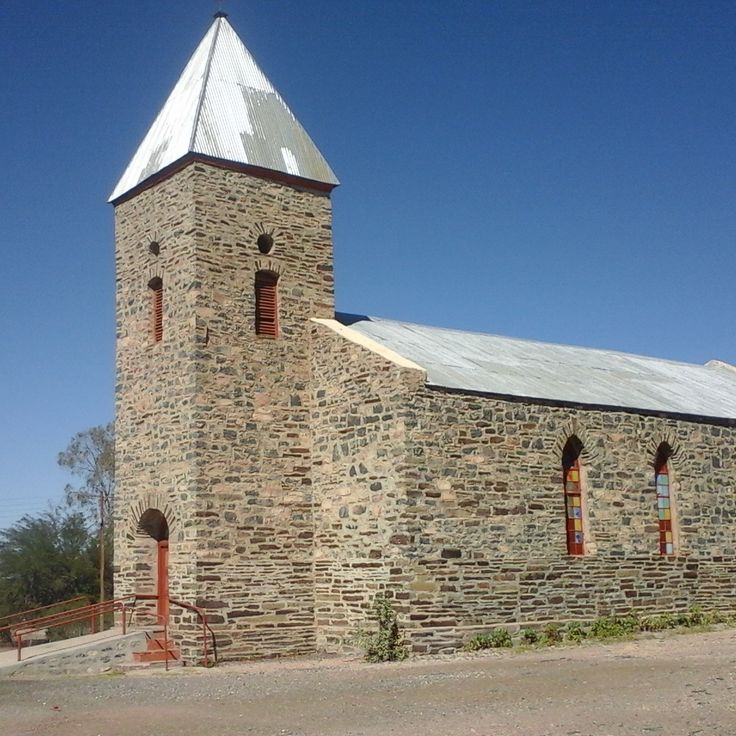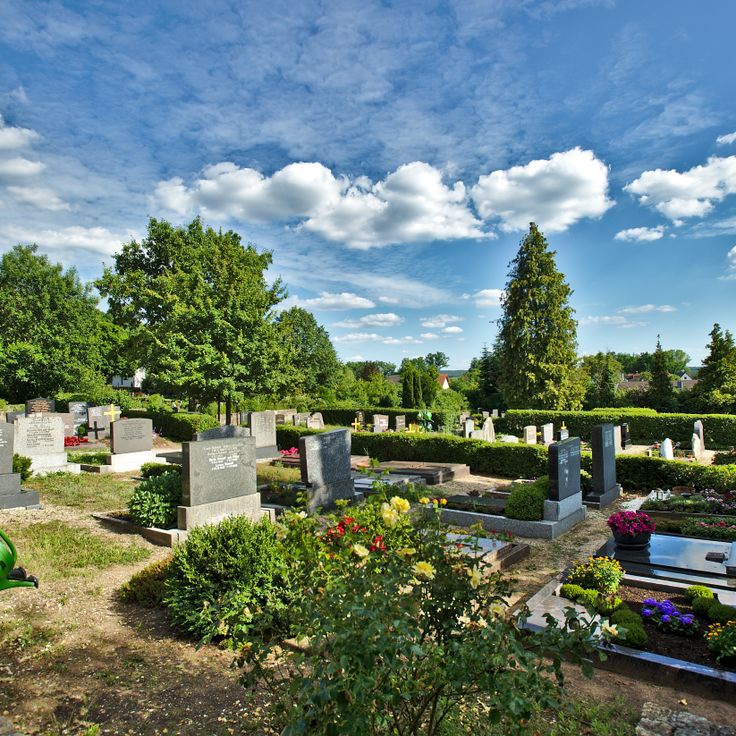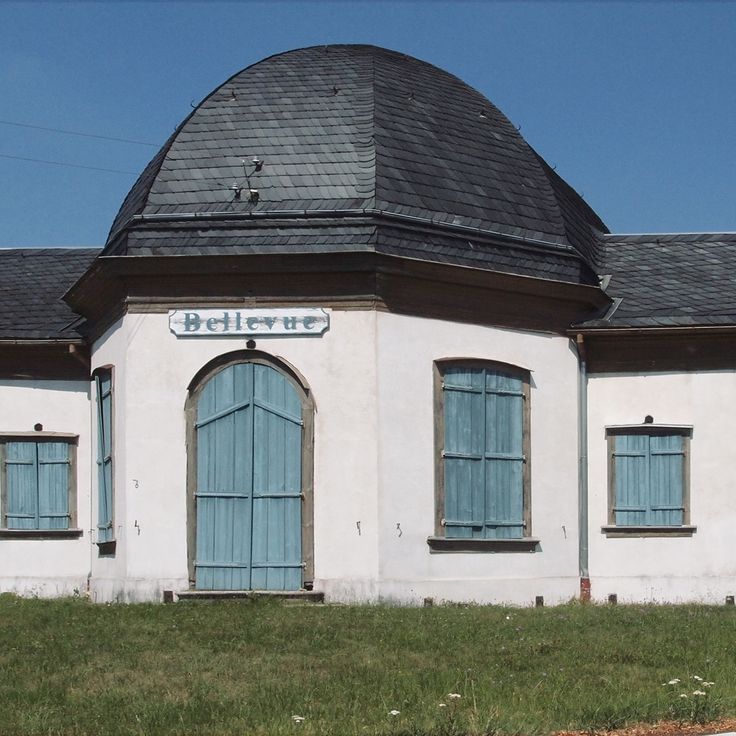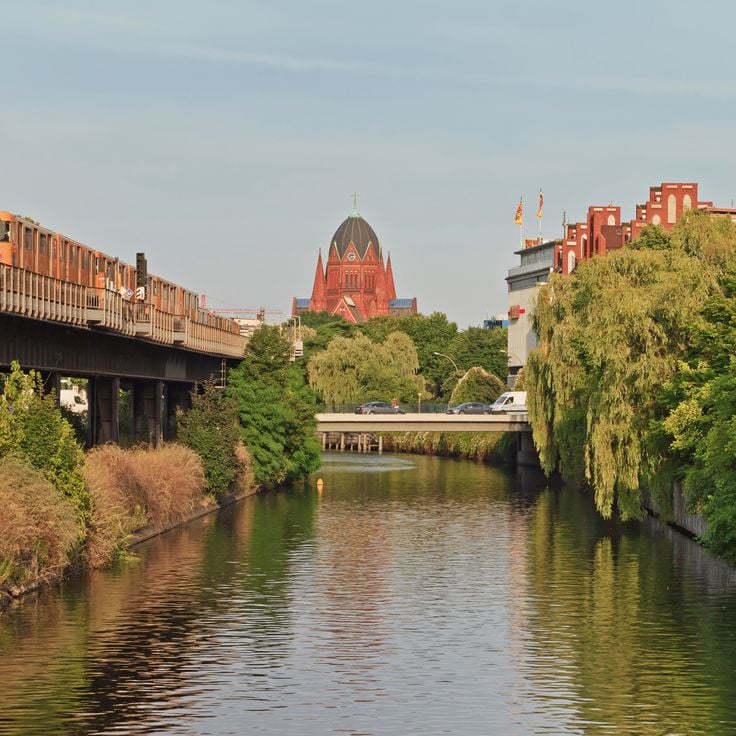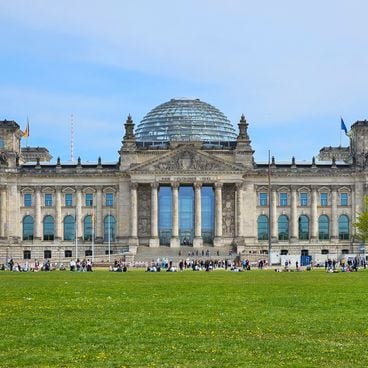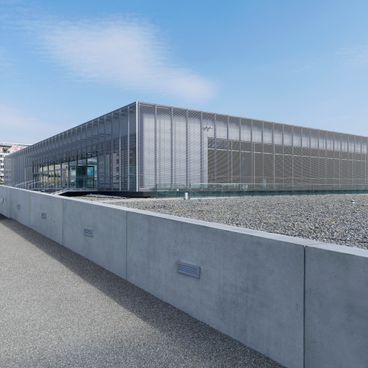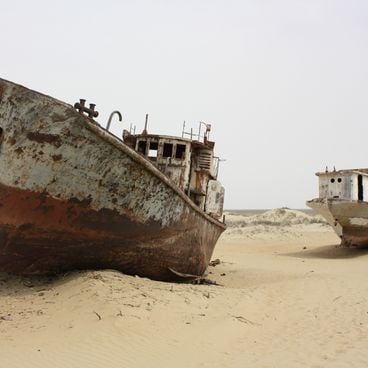Berlin has many stories beyond its famous attractions. This collection shows places where the city's complex history comes alive through creative reuse and unexpected discoveries. The old Tempelhof Airport is now a sprawling public park where people jog and cycle on former runways. Teufelsberg rises from rubble left after World War II, crowned by an abandoned Cold War listening station now covered in street art. The Boros Collection invites you inside a former bomb shelter to see contemporary art displayed within walls that remember the war. The Spreepark still has its vintage Ferris wheel from the GDR era, frozen in time. The Monster Cabinet pushes artistic boundaries with moving mechanical sculptures in an underground space. Each site reveals a different side of the city. The Spy Museum explains how intelligence agencies operated during the divided city. Badeschiff lets you swim in a floating pool inside a repurposed cargo ship on the Spree River. The Funkturm, a steel tower from 1926, offers views across the entire city from its observation deck. You will find local food culture at spots like Curry 36, serving currywurst since 1980 to people from the neighborhood and curious visitors. Saint George Anglican Church brings together the international community with services in English. Walking through these places shows how Berlin takes what remains from its past and turns it into spaces where people gather, create, and connect today.
Tempelhofer Feld is a large public park in Neukölln, created on the grounds of the former Tempelhof Airport. This place fits well within the collection of unusual Berlin locations, as it shows how the city repurposes its history. Today, people come here to jog, cycle, skate, or walk. The wide, open spaces were once runways, and some buildings from the old airport infrastructure remain visible. The field offers sweeping views across open ground and represents a site where history and modern life meet, typical of the city's less-known sides.
The Spy Museum Berlin in this collection shows surveillance equipment, cipher systems and tools from the Cold War era through hands-on demonstrations and historical artifacts. The museum documents espionage history and lets visitors understand the technical methods of surveillance during Berlin's division.
The Badeschiff is a floating public pool built inside a converted cargo ship on the Spree river, operating during summer months. This place fits perfectly into this collection of Berlin's unconventional side, where industrial history transforms into spaces for everyday leisure. It shows how the city finds creative ways to use its waterways and forgotten structures, turning a working ship into a gathering spot for swimmers and visitors seeking something different from typical urban pools.
The Boros Collection displays contemporary art in an unusual setting: a former World War II air-raid bunker. This space in Mitte tells the story of Berlin's turbulent past while functioning as an active gallery today. Visitors experience modern artworks within walls that preserve history. The five floors of the bunker have been transformed to house rotating exhibitions. This location demonstrates how Berlin merges its complex past with present-day creativity.
The Funkturm Berlin stands in the Charlottenburg-Wilmersdorf district and is a striking steel lattice tower built in 1926. With a height of about 150 meters, this tower offers an observation platform and restaurant where visitors can take in views of the entire city. It is part of the history of this less-known area of Berlin, where the past and modern use come together. The tower shows how Berlin has many faces and how old structures take on new purposes.
The Spreepark in this collection represents a rare piece of Berlin history. This amusement park from the GDR era opened in 1969 and offers a window into the past. Abandoned rides and the 45-meter tall Ferris wheel in Plänterwald stand as witnesses to this period. The park shows how Berlin engages with its own history.
The Monster Cabinet is an underground gallery featuring mechanical art installations and robot figures that move through space and produce sounds. This collection reflects Berlin's approach to blending history with creative innovation. The Monster Cabinet offers unusual artistic experiences and shows how the city creates space for experimental art forms.
Teufelsberg in this collection represents how Berlin transformed its past in unconventional ways. The hill was constructed after World War II from rubble and debris. A former NSA listening station sits at its peak, a relic of Cold War surveillance activities. Today street art covers the surfaces, attracting visitors who seek to understand how history and modern creativity coexist in the city. You can climb to the summit and explore the abandoned station while viewing colorful murals on the walls. The site shows how Berlin processes its difficult history and repurposes it.
This red brick Anglican church was built in 1885 in Berlin's Mitte district. The Saint George Anglican Church holds regular services in English for the international community living in the city. As part of Berlin's lesser-known places, it represents the city's layered history where past and present coexist. The church reflects how different cultures have shaped Berlin and continue to be part of its identity today.
This food stand is part of exploring Berlin away from the usual attractions. Since 1980, Curry 36 has served traditional Berlin currywurst with homemade sauce and french fries at affordable prices. The stand represents local food culture and shows how simple places shape the character of the neighborhood.
The Spandau Citadel is a 16th-century fortress in one of Berlin's overlooked neighborhoods, offering a different perspective on the city's complex history. This fortification features four bastions, a 35-meter tower, and an inner courtyard housing a military history museum. Walking through its walls reveals layers of Berlin's turbulent past. Unlike the crowded central monuments, this site invites visitors to discover how the city's neighborhoods each have their own stories to tell.
The Princess Garden is a green space in the Kreuzberg neighborhood where the city shows how it can grow in new ways. Here you find movable planting beds, a café, and programs that bring people together to learn about sustainable gardening and urban farming. This garden fits naturally into this collection of off-the-beaten-path Berlin locations where history meets modern creativity. It demonstrates how neighborhoods take control of their own spaces and shape them for community use.
This techno club occupies a former heating plant and exemplifies Berlin's transformation of forgotten spaces into living cultural venues. The Berghain features multiple dance floors and rotating art exhibitions, reflecting the city's ability to blend history with modern creativity. Like other sites in this collection, it shows how the past has been reimagined rather than erased. The location in Friedrichshain-Kreuzberg represents how neighborhoods shape underground music and art scenes across the city.
Viktoriapark crowns Kreuzberg hill and represents one of Berlin's overlooked destinations featured in this collection of places where history lives on. The park features a 24-meter artificial waterfall and the National Monument dedicated to the Wars of Liberation against Napoleon. From this vantage point, visitors enjoy views across the city and discover a spot that locals cherish but many travelers miss.
The Beelitz-Heilstätten complex shows a different side of Berlin through places where history lives in abandoned buildings. This former sanatorium was built in 1898 and served soldiers and tuberculosis patients as a treatment center. The sprawling facilities with their historical structures tell the story of medical practices from another era and the industrial development of the region. Beelitz-Heilstätten invites visitors to walk between decaying buildings and discover traces of a past that is often overlooked.
Boxhagener Platz represents one of Berlin's less conventional public spaces, showing how a square transforms with the city's rhythm. On Sundays, a flea market takes over, with locals and visitors browsing stalls filled with vintage items, clothing, and secondhand goods. Saturdays bring a food market with regional products and local specialties. Around the edges, restaurants and cafés line the square, where people sit outside, eat, and watch the flow of activity. The plaza reflects the character of Friedrichshain-Kreuzberg, a neighborhood with its own identity and a mixture of historic past and contemporary life.
St. Hedwig's Cathedral is a neoclassical structure with a dome modeled after the Roman Pantheon. Within this collection of unconventional Berlin locations, the cathedral represents the city's religious history and demonstrates how different periods meet within its sacred spaces. The building combines classical architecture with Berlin's layered past.
This park was Berlin's first municipal green space and shows how the city incorporated its past into its present. Two hills were built from Second World War rubble and shape the park's character today. Sports fields, ponds and pathways invite visitors to walk and rest. Volkspark Friedrichshain tells Berlin's story in a straightforward way.
Metzer Eck is a pub in the heart of Prenzlauer Berg that has operated since 1913. The establishment preserves its original interior and represents the kind of overlooked location featured in this collection of Berlin's off-the-beaten-path places, where past and present coexist. Here you can enjoy traditional German food and local beers while experiencing a space that has welcomed Berliners for generations.
The Gethsemane Church represents Berlin's ability to preserve history in unexpected places. Built in 1893, this church served as a vital meeting point for opposition movements and peaceful protests during the GDR era. Within this collection of lesser-known locations and historical sites, the church embodies the resistance and creativity of the people who shaped the city.
The German Museum of Technology documents Berlin's and Germany's technical past. The collections show aircraft, locomotives, ships and machines from different eras. You can walk through old railway cars, examine historic flight equipment and see how technology shaped daily life. Located in Kreuzberg, a neighborhood with its own identity, this museum fits naturally into Berlin's story of repurposed history. Rather than a polished presentation, you encounter real machines and vehicles that still bear the marks of time and use.
Bergmannstraße in this collection shows a different side of Berlin. This shopping street in Kreuzberg keeps the feeling of a local neighborhood where history and present day exist side by side. Here you find restaurants, cafés, antique dealers and independent boutiques housed in 19th-century buildings. The street embodies Berlin's many faces, where each neighborhood holds its own character and local businesses shape daily life.
Schönhausen Palace is an 18th century residence located in a less central Berlin neighborhood. It houses painting collections, historical furniture, and a park with old trees. The place shows how the city preserves its past in quieter areas and offers visitors a glimpse into the lives of Berlin's upper classes in earlier times.
In the collection Unusual Berlin, Alt-Berlin represents the lesser-explored sides of the city where history and present-day life meet. This tavern was established in 1893 and preserves its historic interior from the founding era. It serves traditional German dishes in a space that reflects decades of Berlin history. Alt-Berlin shows how local establishments shape a neighborhood's character and allow visitors to experience the everyday culture of the city.
This neo-renaissance villa was built in the 19th century and now houses exhibition spaces for contemporary art alongside a public park. Within this collection of lesser-known Berlin locations, Schloss Biesdorf demonstrates how historical architecture merges with modern creativity. The adjacent public park invites visitors to stroll and provides a calm contrast to the urban surroundings of the Marzahn-Hellersdorf district.
The Plötzensee Memorial Center honors over 2800 people who were executed here during the National Socialist dictatorship. Among them were many who resisted the regime and opposed its rule. This site tells a story of Berlin's difficult past and shows how individuals stood up against oppression. The memorial serves as a place of remembrance and warns against the dangers of totalitarian power.
The Arminiusmarkthalle fits into this exploration of Berlin as a place where history and contemporary life meet. Built in 1891, this market hall displays the industrial architecture of its era. Today, restaurants and food stalls operate beneath its glass roof, where visitors can experience local food culture. Located in the Moabit neighborhood, the hall embodies the character of a district with its own distinct feel.
Radialsystem V is a former 19th century pumping station in Friedrichshain-Kreuzberg that now hosts dance, theater, and music performances. The venue shows how Berlin transforms old industrial buildings into creative spaces. It fits well within this collection that explores places where the city's past meets contemporary artistic expression and cultural activity.
The Olympic Stadium in Westend fits into this collection as a place that reveals Berlin's complex history. Built in 1936, the stadium holds about 74,475 spectators and continues to host sporting events and concerts today. This venue shows how Berlin carries its past while moving forward. Unlike the hidden galleries and abandoned sites featured elsewhere in this collection, the Olympic Stadium stands as a large, visible structure where you can still experience the city's ongoing cultural life. The building reminds visitors that Berlin's story includes many chapters, some difficult and others focused on bringing people together.
The Nikolai Quarter is Berlin's medieval city center and shows within this collection of unusual places how history comes alive. The restored buildings from the 18th century form narrow streets where you feel transported to another time. Berlin's oldest church stands here and speaks to centuries that shaped the city. Despite its historical importance, the quarter remains off the main paths and offers a quiet place to explore.
This art space showcases contemporary work in a former factory building that has been converted into a gallery. Located in Kreuzberg, one of Berlin's unconventional neighborhoods, it offers rotating exhibitions and cultural events. The space reflects the creative energy of the district, where history and modern creativity meet.
St. Mary's Cemetery in Schöneberg offers a glimpse into Berlin's past away from the main tourist sites. Established in the 18th century, this burial ground features historical tombstones and a baroque chapel. The cemetery shows how the city's different neighborhoods each have their own stories to tell, reflecting the layers of history that shaped Berlin over time.
Bellevue Palace shows another side of Berlin's history. This neoclassical building from 1786 serves as the office of the German Federal President. With its three wings and central domed structure, the palace represents Germany's political continuity. Within this collection of uncommon places, it demonstrates how Berlin preserves its past while carrying it into the present. The location blends historical architecture with the modern function of a state building and speaks to Berlin's many faces beyond famous landmarks.
The Landwehr Canal in Kreuzberg plays an important role in this collection of Berlin's lesser-known places. This historic waterway stretches across the district, with pedestrian and bicycle paths following its 19th-century banks. The canal connects different neighborhoods and shows how water shapes daily life in the city. Along the banks you will find small bars, restaurants, and art installations that reflect the creative energy of Kreuzberg. On weekends, the canal becomes a gathering place where people enjoy the water and watch life unfold along the shore.
The Berlin Wall Memorial is a key site in this collection of overlooked Berlin locations. It preserves an original 1.4 kilometer section of the wall and includes a documentation center and viewing platform where visitors can understand the decades when the city was divided. Standing here, you sense how the barrier separated families, neighborhoods, and an entire city, making the impact of this historical division tangible and real.
